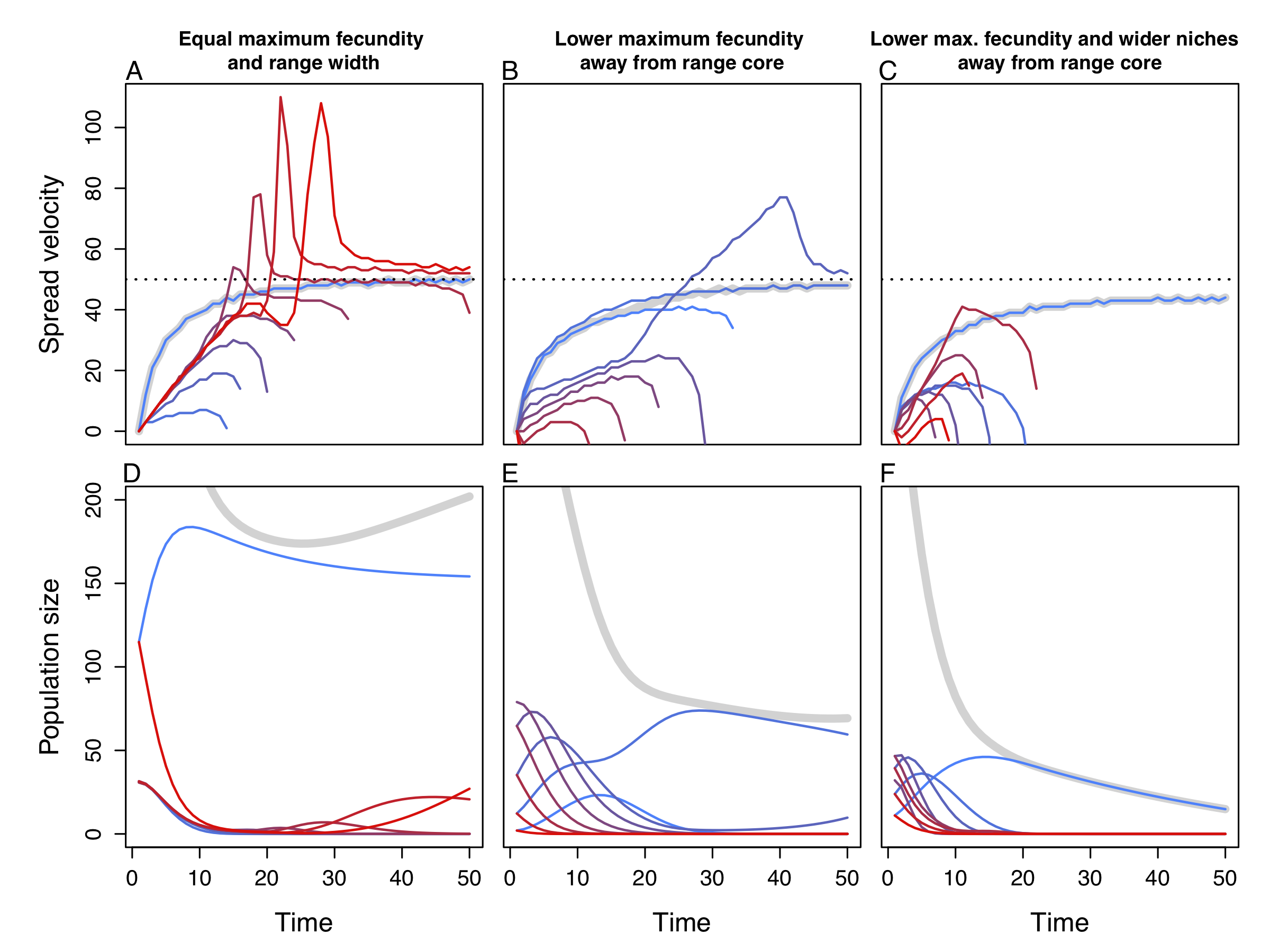
How Dispersal Evolution and Local Adaptation Affect the Range Dynamics of Species Lagging Behind Climate Change
As climate changes, species? ability to spatially track suitable climate depends on their spread velocity, a function of their population growth and dispersal capacity. When climate changes faster than species can spread, the climate experienced at species? expanding range edges may ameliorate as conditions become increasingly similar to those of the range core. When this boosts species? growth rates, their spread accelerates. Here, we use simulations of a spreading population with an annual life history to explore how climatic amelioration interacts with dispersal evolution and local adaptation to determine the dynamics of spread. We found that depending on the timing of dispersal evolution, spread velocity can show contrasting trajectories, sometimes transiently exceeding the climate velocity before decelerating. Climatic amelioration can also accelerate the spread of populations composed of genotypes best adapted to local climatic conditions, but the exact dynamics depends on the pattern of climatic adaptation. We conclude that failing to account for demographic variation across climatic gradients can lead to erroneous conclusions about species? capacity to spatially track suitable climate.